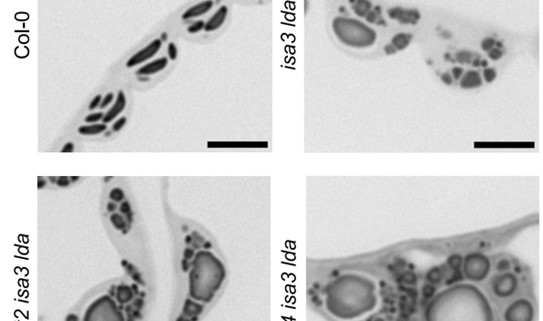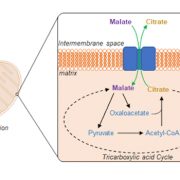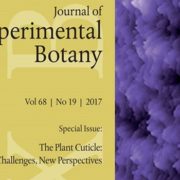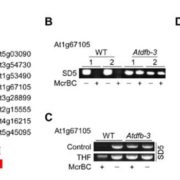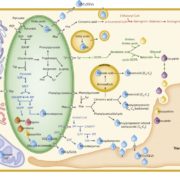You’ve gotta starch somewhere: Evidence for an alternative starch granule initiation pathway
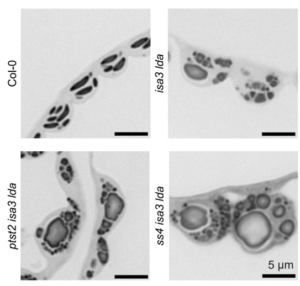 Starch is the major storage carbohydrate in plants, and in Arabidopsis leaves it forms granules in the chloroplasts to supply energy during the night when photosynthesis is inactive. These semicrystalline granules are made of glucose chains, which can be mostly unbranched (amylose) or highly branched (amylopectin). The formation of new starch granules (initiation) is achieved by building on short glucose chains called malto-oligosaccharide (MOS) primers. A key step in this process is the delivery of a glucosyltransferase STARCH SYNTHASE 4 (SS4) to the new granule by PROTEIN TARGETING TO STARCH 2 (PTST2). However, new evidence from Heutinck et al. supports an alternative route for starch granule initiation. In an Arabidopsis mutant deficient in two debranching enzymes, branched MOS in the chloroplast accumulate to levels ten times higher than in the wild type. Additional granules were also formed in these chloroplasts, which were smaller, differently shaped, and not reliant on SS4 or PTST2 to be initiated. While additional research is needed to elucidate the mechanism, the possibility of a new pathway for starch granule initiation provides huge potential for better understanding plant carbon metabolism and hence crop improvement. (Summary by Ciara O’Brien) Plant Physiol. 10.1093/plphys/kiaf002
Starch is the major storage carbohydrate in plants, and in Arabidopsis leaves it forms granules in the chloroplasts to supply energy during the night when photosynthesis is inactive. These semicrystalline granules are made of glucose chains, which can be mostly unbranched (amylose) or highly branched (amylopectin). The formation of new starch granules (initiation) is achieved by building on short glucose chains called malto-oligosaccharide (MOS) primers. A key step in this process is the delivery of a glucosyltransferase STARCH SYNTHASE 4 (SS4) to the new granule by PROTEIN TARGETING TO STARCH 2 (PTST2). However, new evidence from Heutinck et al. supports an alternative route for starch granule initiation. In an Arabidopsis mutant deficient in two debranching enzymes, branched MOS in the chloroplast accumulate to levels ten times higher than in the wild type. Additional granules were also formed in these chloroplasts, which were smaller, differently shaped, and not reliant on SS4 or PTST2 to be initiated. While additional research is needed to elucidate the mechanism, the possibility of a new pathway for starch granule initiation provides huge potential for better understanding plant carbon metabolism and hence crop improvement. (Summary by Ciara O’Brien) Plant Physiol. 10.1093/plphys/kiaf002


